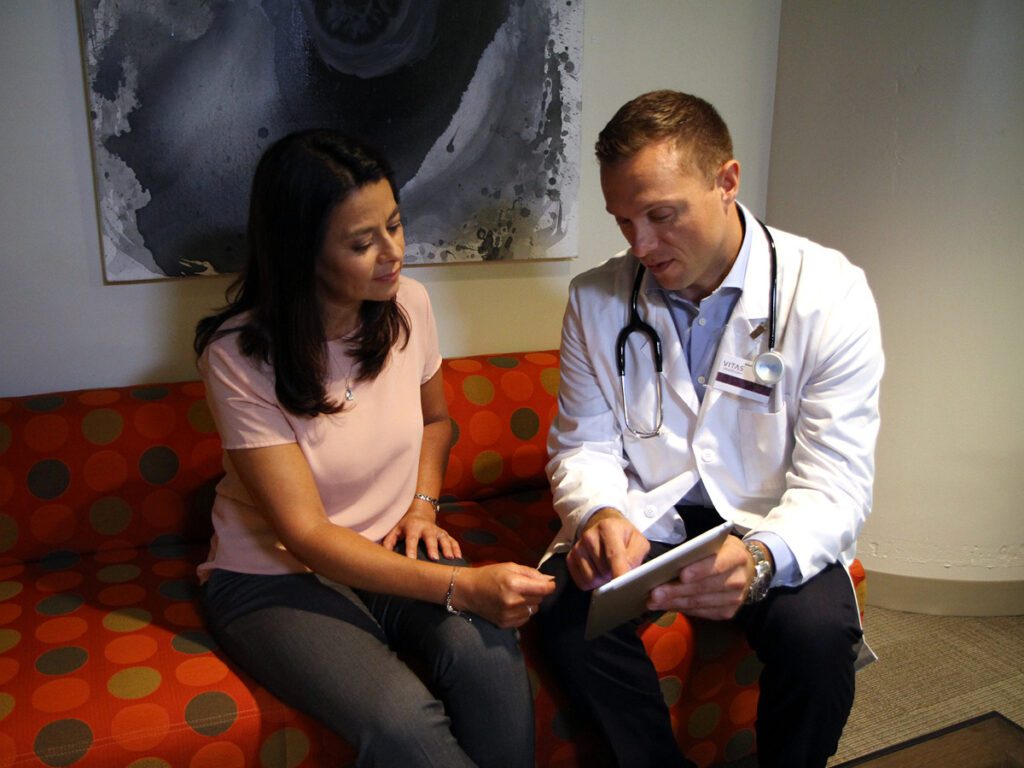Care When a Cure Is Not an Option
by BRENDA EGGERT BRADER
photos courtesy of VITAS Healthcare
While many people are familiar with the term hospice, most don’t fully understand the broad range of care it includes. End-of-life decisions can be wrought with emotion and trepidation, and while hospice is there to tend to the physical needs of the patients, it’s also an invaluable service for grieving families.
Hospice and palliative care programs provide pain management, symptom control, psychosocial support, and spiritual care to patients and their families when a cure is not possible. There are four hospice agencies that have contracts to offer care in Polk County: Compassionate Care Hospice, Cornerstone Hospice and Palliative Care, Good Shepherd Hospice, and VITAS Healthcare.
Medicare provides the guidelines that all providers follow. Differences arise between for-profit businesses and nonprofit organizations. Nonprofit organizations have philanthropic areas and can make donations to those who need the care but can’t afford it. The foundation can step in and pay those fees.
“For most, hospice is a plan of care for people who are dealing with end-of-life issues,” says Garry Mac, vice president of hospice strategies for Cornerstone Hospice and Palliative Care.
Hospice care is chosen when no curative care is prescribed and the patient is expected to live six months or less. Once a physician makes the recommendation for hospice, the goal of treatment changes to pain management and quality of life.
“We work with you, and the doctor is never out of the picture,” Mac says. “Quality of life means something different to each person. It begins with what do you want to do, and how do you want it to work with you through the family.”
Hospice care is received wherever “home” is for the patient, whether that is a nursing home, assisted living, or their home.
Medicare pays up to 100 percent (if the patient is at Medicare age), but Medicare only pays for the care, not room and board. Otherwise, Medicaid and private health insurance — when applicable — pay the cost.
Medicare’s guidelines are what all hospice providers follow when tailoring their care, said Marcela Restrepo, senior director of market development VITAS Healthcare in Midstate Florida, which covers Polk, Highlands, and Hardee counties.
Each patient has a full hospice team consisting of a doctor, hospice nurse, social worker (who works with the patient and family to make sure affairs are in order, dealing with Medicaid and the payer source), a nondenominational chaplain, and a bereavement counselor (to help the family members deal with their grief).
Hospice care is a 24-7 business that surrounds the family with care and support while making the patient as comfortable as possible. Nurses and other healthcare personnel work around the clock and stay in constant contact with doctors to address issues as they arise.
Patients in hospice care are consulted as to what they wish to accomplish. Some request going out to meals, seeing a baseball or football game again, or visiting someone special.
For the Family
Grief support is a service all hospice organizations provide.
“Grief counseling is provided during the service of the assigned patient and lasting at least 13 months past the month when the family lost the deceased member,” Restrepo says. “VITAS offers grief groups, including virtual support groups online.”
“Kids grieve differently than adults,” Mac says. “Polk County Cornerstone Hospice offers a kids’ camp where children gather for games, sports, and crafts where they can discover, ‘Hey I am not alone.’ ”
Palliative care is provided within the context of serious illness: chronic, progressive pulmonary disorders; renal disease; chronic heart failure; HIV/AIDS; progressive neurological conditions; cancer, etc. It supports a patient’s physical, emotional, and psychosocial needs, providing comfort and improving quality of life. All four hospice companies serving Polk also offer palliative care.
Music, guitar players, singers, massage therapy, and other soothing activities are offered to the patient, Restrepo said.
“A lot of volunteers provide the help like those making crafts or blankets for the patient. The nurse creates the schedule for the patients and will include any of the therapies.”
